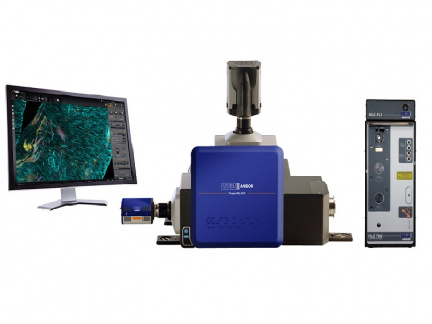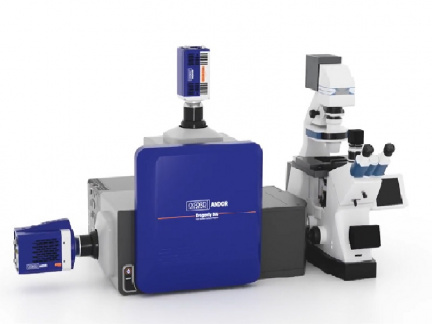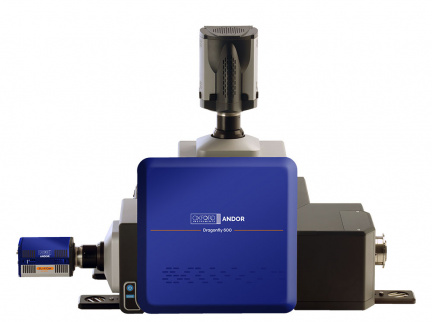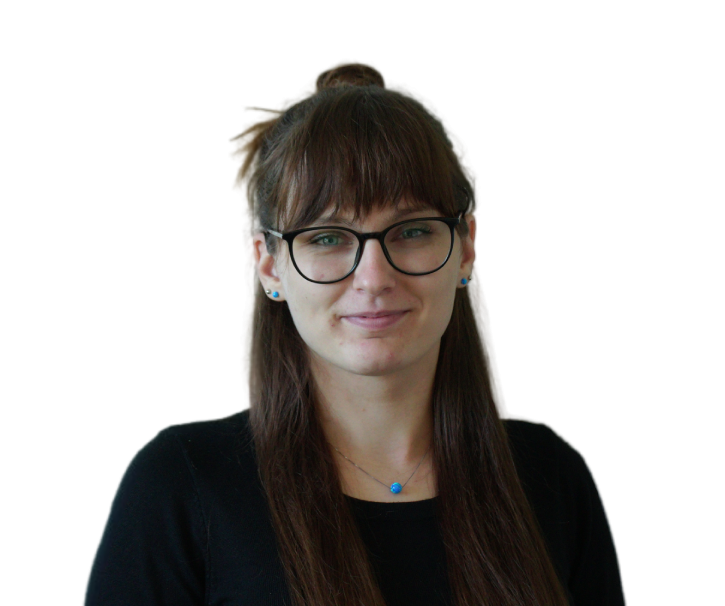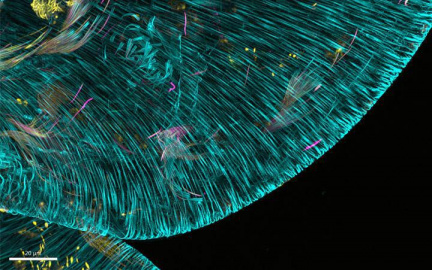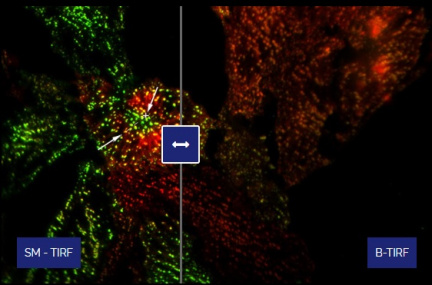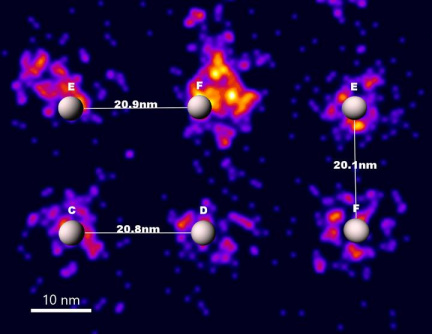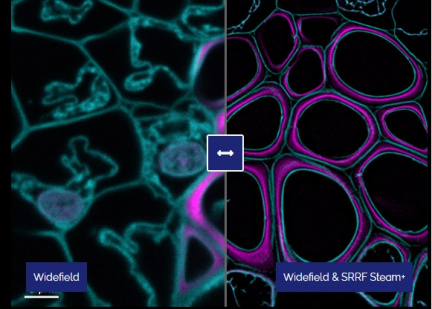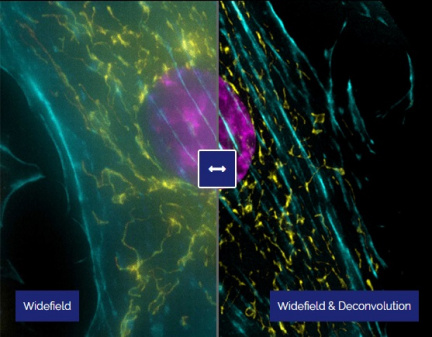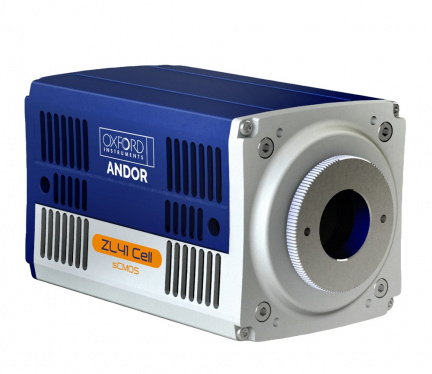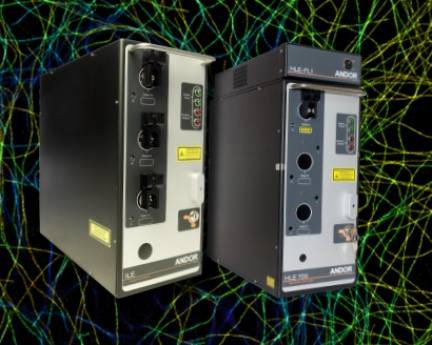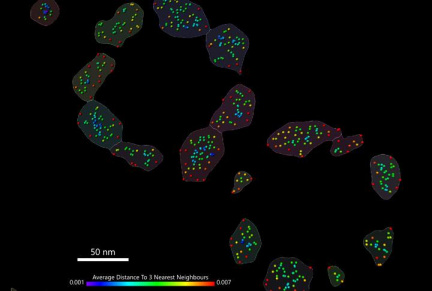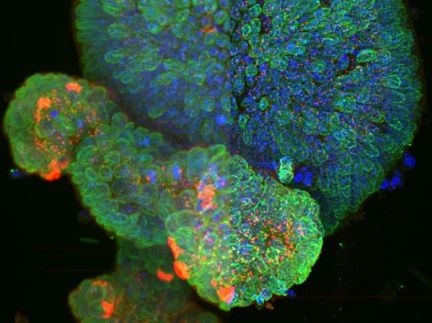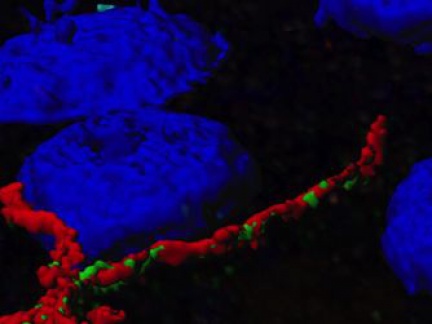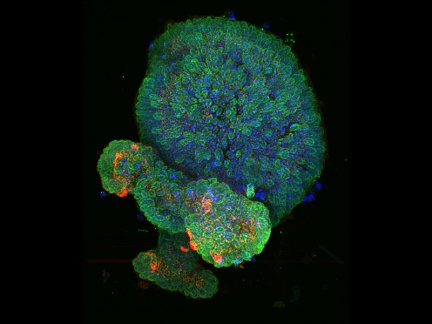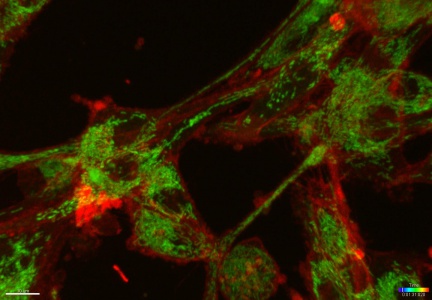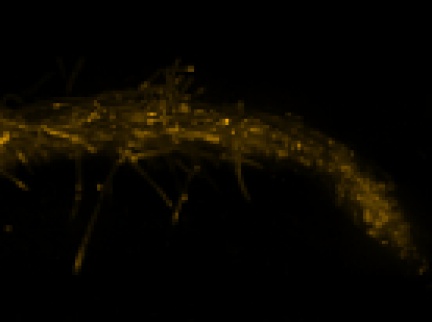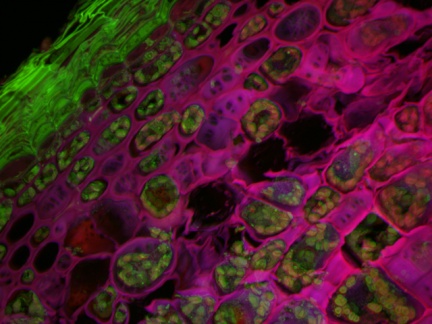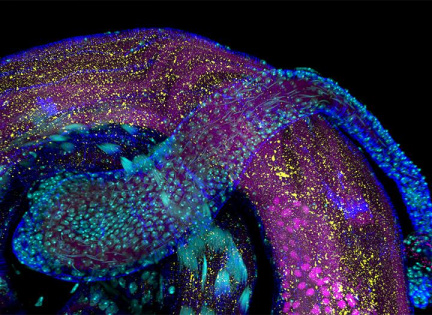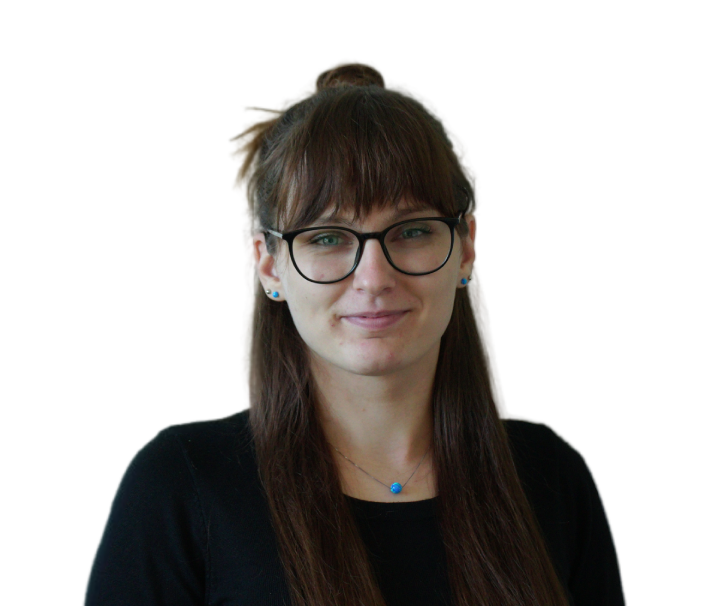Like its predecessors, the Dragonfly 500 and 200, the new Dragonfly 600 system offers four key imaging modalities - fast spinning disk confocal imaging, laser widefield imaging, transmitted light imaging (DIC, phase contrast, brightfield) and new modules for super-resolution microscopy (3D SMLM and B-TIRF*).
Technical parameters of the Dragonfly 600:
1. Dual-Microlens Spinning Disk
In confocal microscopy with a spinning disk, multiple sample points are illuminated simultaneously through pinholes (holes in the disk). The light emitted by the sample is re-imaged through the pinholes, thus "filtering out" signals originating outside the focal plane before they reach the detector (camera). Therefore, the laser power required to achieve an excellent confocal image is reduced. This reduces the background and consequently allows imaging deeper into the sample.
Benefits of spinning disk technology:
-
Gentle imaging of samples - the ability to image live events without phototoxicity and photobleaching.
-
Fast confocal imaging
-
Imaging of very fast live events
-
Increased information_blocking for deep imaging of thicker samples
-
Increased signal-to-noise ratio
2. Single molecule imaging
Dragonfly 600 has all the tools needed for single molecule localization method. A powerful HLE laser engine provides the necessary laser power for dSTORM and DNA-PAINT applications. 3D SMLM uses an astigmatic 3D super-resolution module and provides images with nanometer localization accuracy and corresponding resolution down to 10 nm.
Single molecule localization can be performed using the 3D super-resolution module, which is compatible with all modalities: widefield imaging, confocal imaging and TIRF. The image acquired in one plane through the 3D super-resolution module provides axial information in the range of ~1 μm with a corresponding resolution up to 30 nm.
3. Sensitive detectors
Sensitivity is a fundamental parameter of all microscopy systems. It determines the minimum detectable signal for a given excitation intensity. The Dragonfly system includes the most sensitive EMCCD and sCMOS detectors on the market.
For the weakest signals, iXon EMCCD detectors can be used, which capture as little as 1.9 photons per pixel with a high signal-to-noise ratio. The latest generation of sCMOS detectors offers an excellent balance between sensitivity and speed - quantum efficiency up to 95% and speeds in excess of 44 frames per second at full resolution!
Read more about Andor detectors in the datasheets below.
4. Borealis®
Borealis® is Andor's patented technology that delivers superior uniform illumination across the entire field of view without edge vignetting. It minimizes variance in excitation uniformity (≤5%) and significantly improves the resulting image quality. Borealis® reduces the occurrence of artifacts arising from image stitching and montage imaging. The patented Borealis® technology is also available as part of the new unique B-TIRF® module on the Dragonfly 600.
5. TIRF and B-TIRF
The unique Borealis® Total Internal Reflection Fluorescence (B-TIRF) module is based on the patented Borealis® system. It prevents interference and banding artifacts occurring with standard TIRF imaging and thus provides excellent image quality. B-TIRF can be used for common TIRF applications such as imaging events at the cell membrane edge (e.g. endo/exocytosis, focal adhesion and cell movement, viral infection dynamics, etc.).
In the Dragonfly system, B-TIRF can be combined with an illumination zoom or a high power laser engine ( HLE ) to perform single molecule localization experiments (SMLM) with a significantly increased signal-to-noise ratio.
6. Laser engines: ILE and HLE
For the new generation Dragonfly 600, a choice between two types of laser illumination is possible:
ILE = Integrated Laser Engine or the more powerful HLE = High Power Laser Engine. Both laser engines offer multimode fibre illumination. Multimode fibers transmit longer wavelengths than single-mode fibers, require less maintenance and can fill the square camera sensor perfectly. Both ILE and HLE, are suitable for imaging live cells and sensitive samples as they provide tightly controlled and gentle illumination. Both ILE and HLE are compatible with the new B-TIRF imaging modality.
In addition,HLE offers the high power (in the order of hundreds of mW to units of Watt) required for single molecule imaging and greatly accelerates spatial imaging in transcriptomic experiments.
7. Intuitive software
A total of three pieces of software are available within the Dragonfly 600 system:
FUSION ACQUISITION SOFTWARE:
The Fusion application was designed to meet the demands of today's researchers, providing ease of use and instant visual feedback for data inspection. Fusion simplifies the operation of the Dragonfly system and makes cutting-edge microscopy accessible to all users.
-
Real-time 3D visualization provides insight into your experiments
-
Stitching and deconvolution can be activated in the protocol to provide a processed image immediately after imaging is complete
-
Multi-well acquisition is available through an easy and intuitive user interface supporting up to 384-well plates: ideal for easy and fast screening of samples, organoids and phenotypes
-
Z-acquisition can also be combined with the new burst shutter mode for fast acquisition
-
3D imaging of single molecules can be performed in whole cells with minimal software interaction
-
An autofocus system is available in all imaging modalities to provide stable and accurate imaging at all points throughout the experiment
POWERFUL IMARIS ® ANALYTICAL SOFTWARE
Imaris ® for Dragonfly analysis software is an integral part of every Dragonfly system. Imaris ® for Dragonfly Super-Resolution is an integral part of the new Dragonfly 600 system.
Imaris ® for Dragonfly allows the user to:
- Render surfaces and volume in 3D/4D
- Create high-resolution images
- Create sophisticated multi-dimensional animations
- Utilize image data pre-processing
Imaris® for Dragonfly Super-Resolution adds extra functionality for visualizing and analyzing 3D SMLM data:
- Measure objects: number, volume, intensity, area, and more
- Distance measurements: average distance between nearest objects, shortest distance to other structures or reference points
- Object classification using machine learning
- Colour coding of objects based on measurements
Additional application-specific modules are available on request and include options from Imaris packages for cell biology, neuroscience and much more.
OPEN-SOURCE SOFTWARE PICASSO
Andor has worked for a long time with the developers of Picasso to make it possible to open and read files obtained in Fusion software in this open-source program. Users have the flexibility to switch to the Picasso software and load 3D SMLM localization data in HDF5 format. 3D rendering and statistical measurements are then completed in Imaris.
Fusion, Imaris and Picasso work in harmony. Picasso directly reads raw data from Fusion (in *.ims format), localizes single molecule events in the XY and Z axes, and exports localizations and voxels. Imaris reads voxels as "3D Volume" and localizations as "Spots", visualizes, filters and performs analysis (e.g. nearest neighbor measurements).
